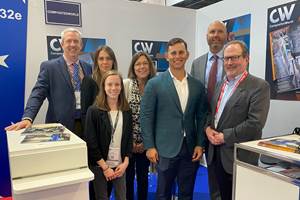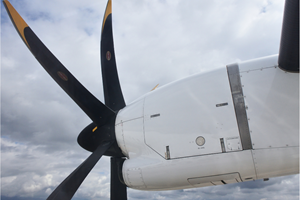What's old is new again
Happy New Year. As it does for many of you, the December-to-January jump heralds for us at HPC a renewal of sorts as we delve into a fresh collection of stories and welcome some new contributing writers. Among the new names you’ll see in our bylines, one that might be familiar is Chris Red. The editor and VP of market
Happy New Year. As it does for many of you, the December-to-January jump heralds for us at HPC a renewal of sorts as we delve into a fresh collection of stories and welcome some new contributing writers. Among the new names you’ll see in our bylines, one that might be familiar is Chris Red. The editor and VP of market research at Composite Market Reports (Gilbert, Ariz.), Chris has been involved in the composites industry for many years and is a highly respected and familiar face at industry conferences and seminars around the world. His specialty, market and technology analysis, becomes a strength for HPC in 2008. Chris will write a series of “Market Outlook” features, covering sports equipment this month (see “Market Outlook” under “Related Content,” at left), and in subsequent months he will explore advanced composites use in rotorcraft, business and experimental aircraft, commercial aircraft and jet engines.
Boeing uncertainty, carbon fiber’s future
Just before the close of 2007, The Boeing Co. hosted one of its quarterly conference calls/Webcasts to provide an update on the status of the 787 Dreamliner. As you know, after what had been an apparently smooth-running, glitch-free production process for the 787, Boeing announced in mid-October that the first 787 was not coming together as planned, would not make its first flight in the fall as planned and would not be delivered to All Nippon Airways in May 2008 as planned. Further, Mike Bair, manager of the 787 program, was unseated and replaced by Boeing veteran Pat Shanahan. Along, then, came the mid-December conference call, ahead of which there was some speculation in the aerospace industry that Boeing would announce further 787 delays. What we heard, however, was a steadfast declaration by Shanahan and Boeing executive VP Scott Carson that the Dreamliner would, indeed, power up in January, fly by March, and land in All Nippon’s inbox before the end of 2008.
Questions during this conference call came from a variety of high-profile types, including investment bankers and mass media journalists, and nearly all betrayed some skepticism that Boeing could meet the new schedule. Further concern seemed to revolve around two additional factors: Boeing has planned, and continues to plan, to build 109 787s in 2009 — nine planes a month — followed by a ramp-up to an eye-popping 14 planes a month in 2010. All of this is necessary so that Boeing can start nibbling away at the 761 Dreamliner orders now on its books.
Plans like this have a ripple effect throughout the composites industry: Toray is in talks with Boeing to extend its carbon fiber supply contract for the 787 to meet the 2010 demand, which means that Toray would have to expand facilities and add capacity at plants in Washington State, Alabama and Japan, which means that the closely watched carbon fiber supply/demand equation very likely will change … again.
The early ripples were felt in Washington, D.C. as well, at COMPOSITESWORLD’s Carbon Fiber 2007 Conference (Dec. 5-7, 2007; see “Carbon Fiber 2007 ….” under “Related Content”). The question before conference attendees was deceptively simple: Given the spate of recent announcements of carbon fiber production expansions, will there be enough to go around in the next decade? There was no consensus. Some looked at data presented at the conference and saw supply exceeding demand consistently. Doubters, citing pent-up demand caused by the shortage, declared that there will never be enough carbon fiber to meet every market’s need. The truth is no one can know for sure. Welcome to 2008.
Related Content
What to make of the first JEC World in three years
CW went to JEC World 2022 not sure what to expect. We were pleasantly surprised, and learned much about where and how new composites technologies are being developed.
Read MoreWe're going to need a lot of propeller blades
As advanced air mobility expands and annual shipsets get into the thousands, the demand for composite propeller blades is expected to skyrocket. What are the implications for the composites supply chain?
Read MoreHow composites have become a necessity
Composites used to be one of many material options across industries and applications, but that's not the case anymore.
Read MoreCAMX 2022: 10 reasons to attend
Looking for a good reason to attend CAMX 2022? Look no further.
Read MoreRead Next
From the CW Archives: The tale of the thermoplastic cryotank
In 2006, guest columnist Bob Hartunian related the story of his efforts two decades prior, while at McDonnell Douglas, to develop a thermoplastic composite crytank for hydrogen storage. He learned a lot of lessons.
Read MoreCW’s 2024 Top Shops survey offers new approach to benchmarking
Respondents that complete the survey by April 30, 2024, have the chance to be recognized as an honoree.
Read MoreComposites end markets: Energy (2024)
Composites are used widely in oil/gas, wind and other renewable energy applications. Despite market challenges, growth potential and innovation for composites continue.
Read More


























